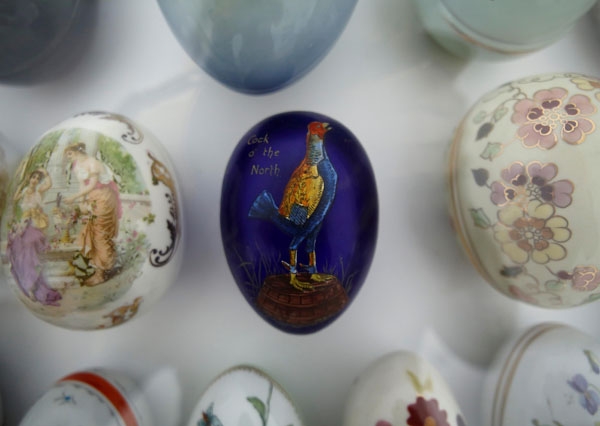
The egg plays a special role in every culture around the globe. It is the beginning and the end, life and death, birth and mortality. In many cultures, eggs were and still are symbols of cure, fertility, hope and sacrifice.
Egg. Or as it’s known in other languages: Ei, яйцо, jajiko, muna, uovo, ägg, yumurta, oeuf, αβγό, tojás, vajce, بيضة, aeg, jaje, ovo, yai, 雞蛋, telur, huevo
The egg plays a special role in every culture around the globe. It is the beginning and the end, life and death, birth and mortality. In many cultures, eggs were and still are symbols of cure, fertility, hope and sacrifice.
Even scientists, theologians and philosophers have spent quite a lot of time thinking, discussing and literally quarreling about the egg. The question of how life began has always bothered mankind; we come up with approaches and theories to answer one question in particular: which came first, the chicken or the egg?
In Chinese mythology, earth (yin) and heaven (yang) are formed from the world-egg Panku and ancient Egyptians represented the sun god Re as an egg. The Greek mythology of creation describes that Eros, who set the world in motion, arose from the silver world-egg. In Hinduism, Brahma and Shiva were born from the cosmic egg and Christians believe that the egg symbolizes hope and resurrection. Just to mention a few examples of how the symbolic character of the egg survived over centuries in different and widely separated civilizations.
Austrian sculptor, artist and retired university professor Wander Bertoni, aged 87, finally made his idea come true: he created his own egg museum. The numerous eggs he has collected from all corners of the globe over the last 70 years, often purchased at flea markets or received as gifts from his students, have found a home in a “glass nest” building with two levels embedded in the sculptor park on Bertoni’s property in a little town called Winden am See in the Austrian province of Burgenland.
From a variety of materials manufactured and originating in different cultures, eras and styles, around 4,000 eggs are displayed with one thing in common: their unique shape.
The egg is a good example of design theory:
“If you squeeze a ball, which has an absolute geometric form, a deformation occurs into the shape of an egg. From an absolute repose has been created movement and expression, the first sign of life of the abstract world of forms and geometry.” – Wander Bertoni
In addition to exhibits of wood, ceramics, stone and glass eggs in many different sizes and colors, ornate chicken and goose eggs are lined up. Finely painted icon images from the Russian Orthodox-Church can be found next to beaded eggs from Romania; Venetian motifs beside the Chinese, cultic phallus symbols next to fossilized dinosaur eggs, sacral portrayals are juxtaposed beside plain kitsch.
I watched Mister Bertoni talk about his favorite egg sculptures, the Lingam stone eggs from India, a phallus symbol of the Hindu godhood. After all these years of careful collecting and cataloging Wander Bertoni still looks at the showcases, which I assume he already did at least a thousand times. His passion has not lessened. His enthusiasm is as it was on the first day. It seems that he can still discover something fascinating or never seen in every single egg. It was something unexpectedly odd but it suited him so well. Rough sculptor hands gently holding a fragile egg; it could not be more opposite.
And yes, I confess that I had fun sitting in Bertoni’s huge egg sculpture.











